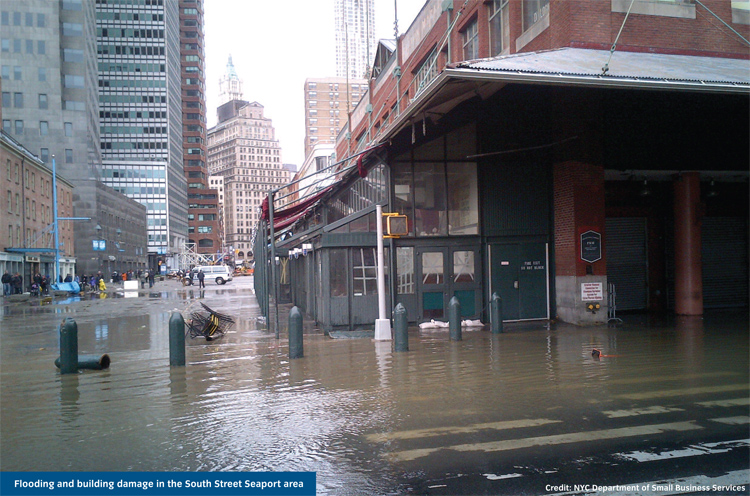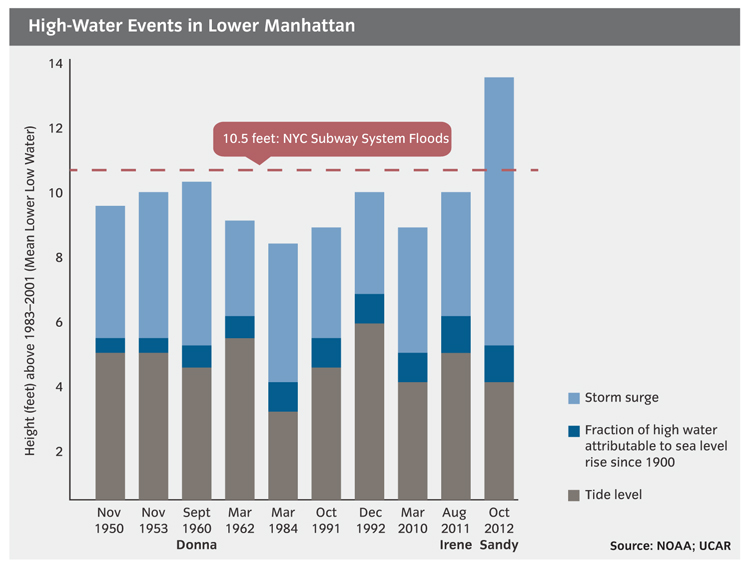
 Lower Manhattan Coastal Resiliency311
Lower Manhattan Coastal Resiliency311 Search all NYC.gov websites
Search all NYC.gov websites
Background
Background - Overview

New York City, like many other cities around the world, is facing the complex reality of climate change and its severe impacts on the urban environment. In October 2012, Hurricane Sandy hit New York City, flooding 17% of the city's land, claiming 44 lives, and causing $19 billion in damages and lost economic activity. Neighborhoods were devastated: 88,700 buildings were flooded; 23,400 businesses were impacted; and our region's infrastructure was seriously disrupted. Over 2,000,000 residents were without power for weeks and fuel shortages persisted for over a month.
Flowing from the Hudson River, East River, and New York Harbor, Sandy's storm surge overtopped bulkheads all around lower Manhattan, sending floodwaters racing inland. Across the area, flooding typically reached one to two blocks from the coastline at depths of two to three feet. At the peak of the storm, the Battery experienced water heights of more than 14 feet above Mean Lower Low Water (MLLW), eclipsing the previous high water mark from Hurricane Donna in 1960 by nearly four feet.

Because Lower Manhattan is a critical economic, cultural, and civic hub for New York City and the region, the impacts of climate change on Lower Manhattan extend far beyond the District.
As one of the most recognizable and iconic waterfronts in the world, Lower Manhattan is home to at-risk populations, economic activity of national importance, and critical transportation and utility infrastructure. Critical to the global economy, the area hosts more than 100,000 residents, 300,000 jobs, and 12,000 businesses. It also includes the important financial capital of Wall Street, an active waterfront, and access to cultural destinations such as Liberty Island, Ellis Island, and Governors Island. These assets, which make Lower Manhattan unique, also underscore the importance of the LMCR Project.
Major reports in 2018 have solidified the scientific consensus that, absent significant action, climate change will produce devastating global consequences at a faster rate than previously thought. A plan for action is needed to ensure that Lower Manhattan's vitality and growth continues in this century and into the next.


